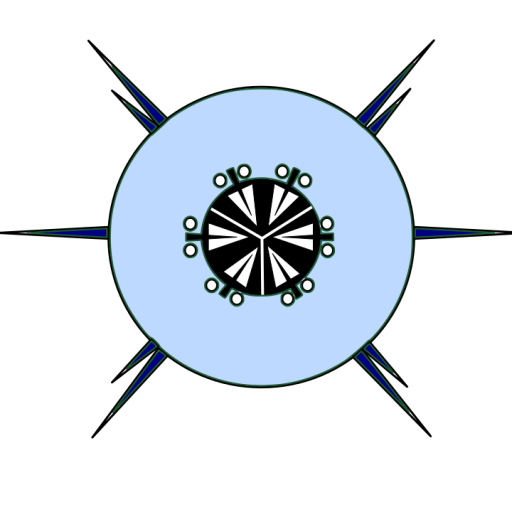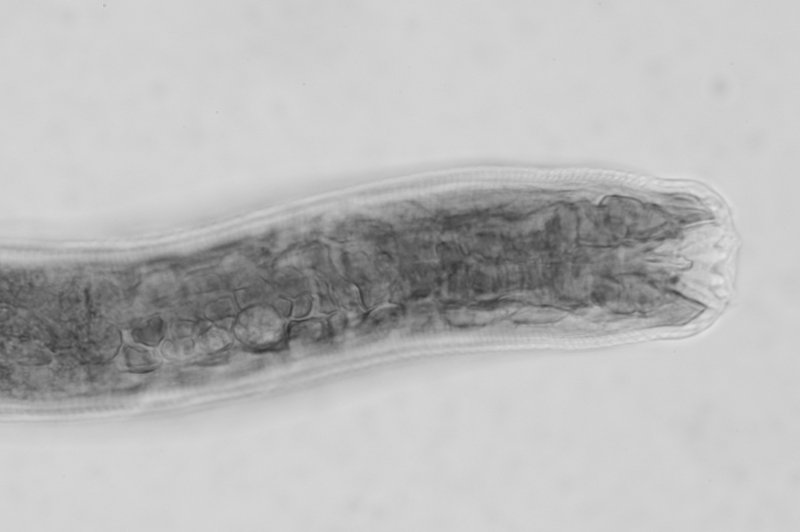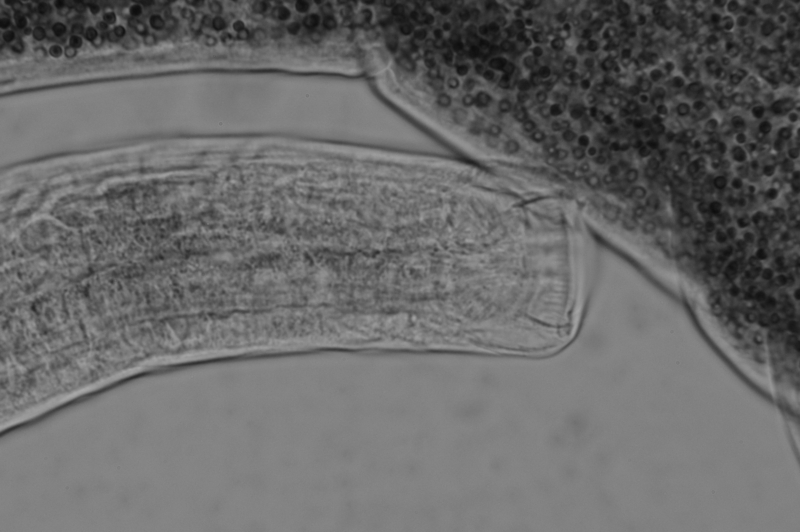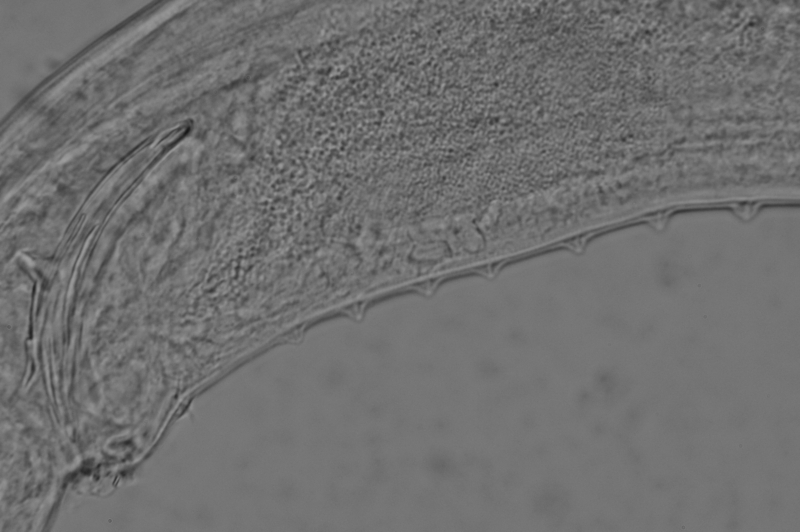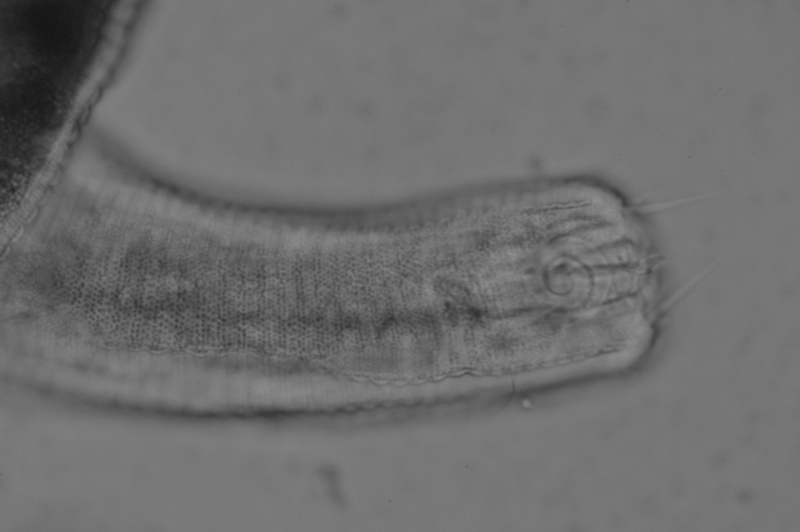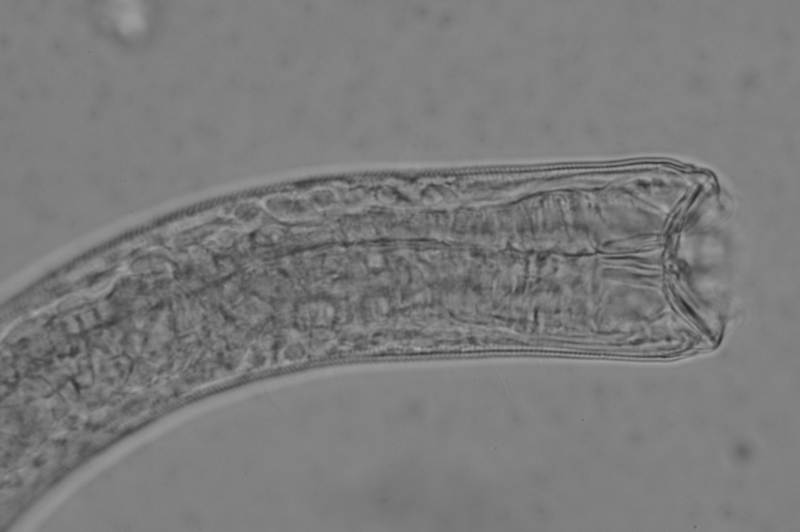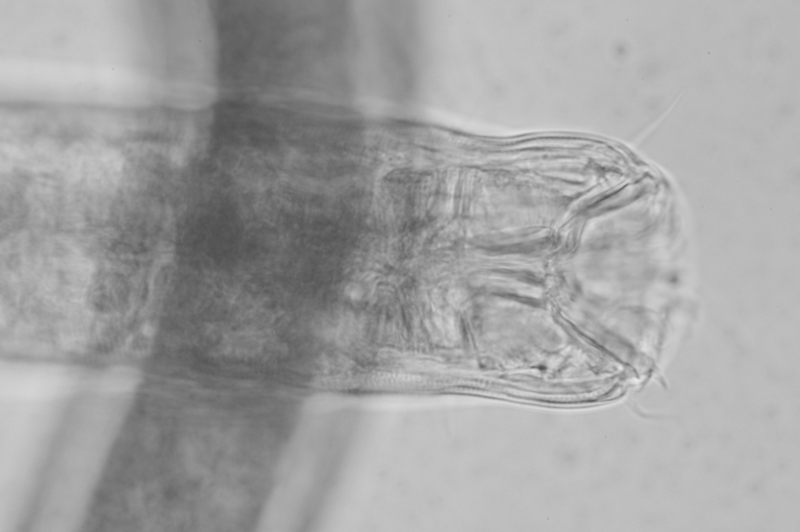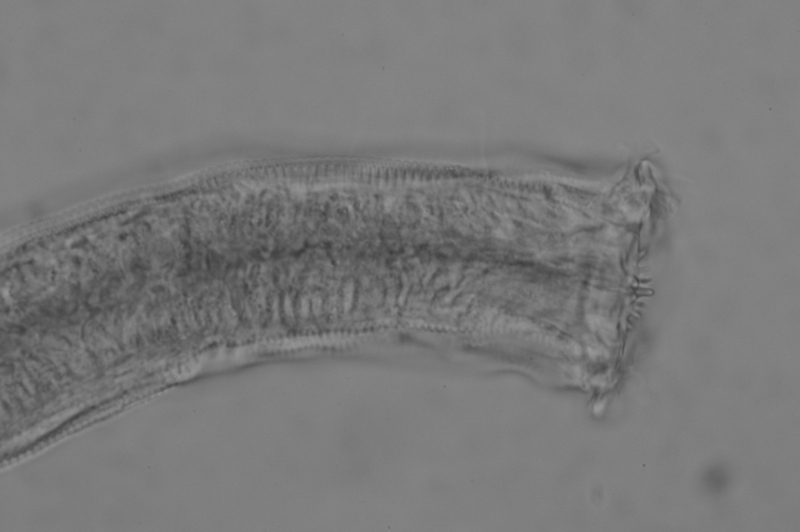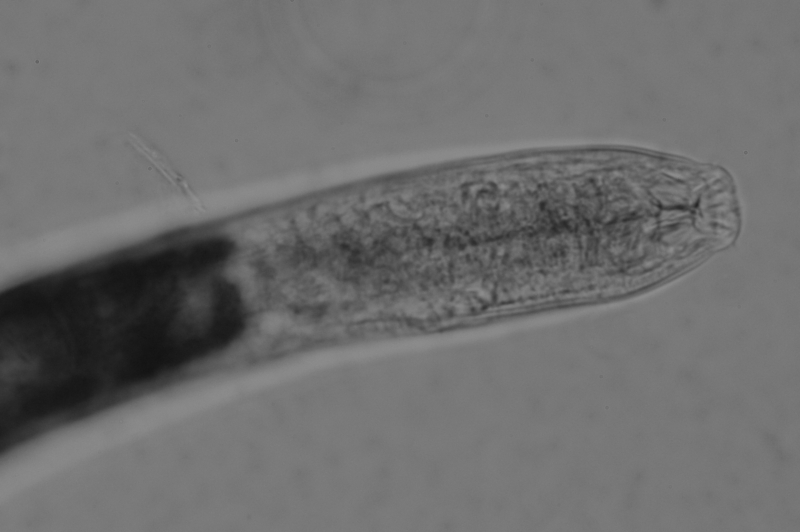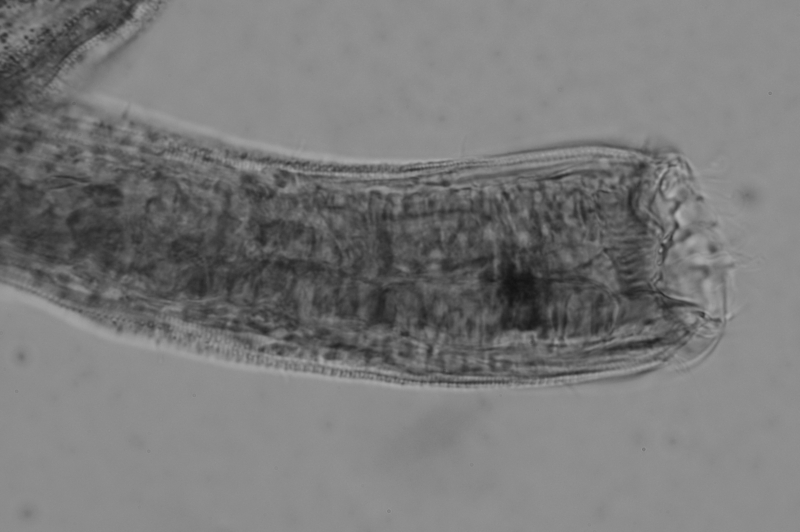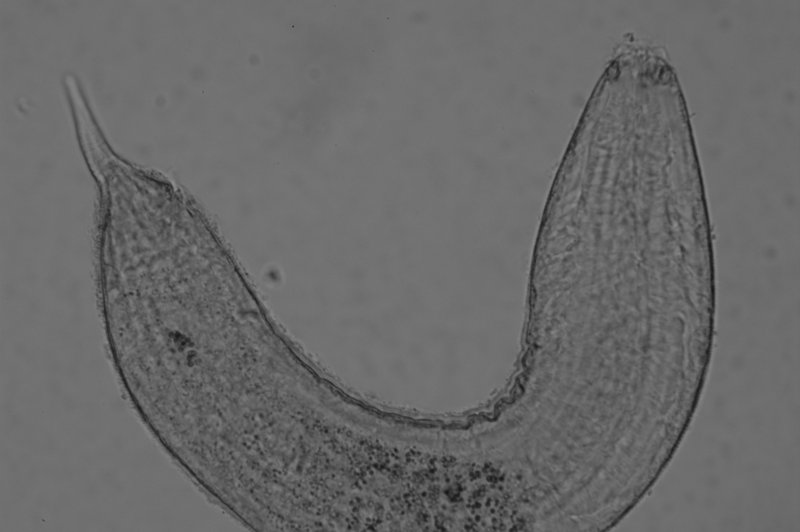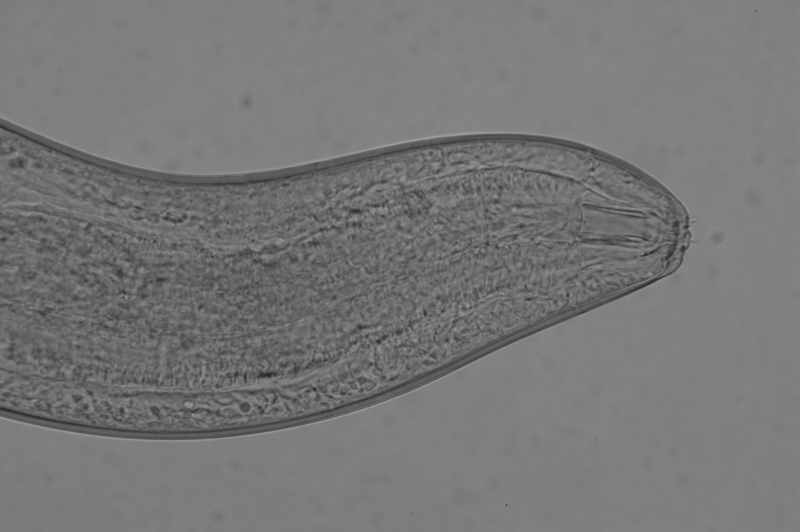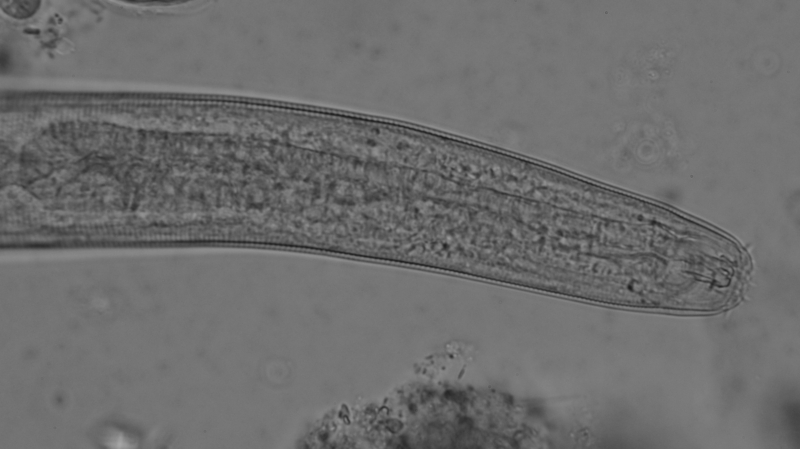This individual was collected from the high shore (dry zone) at Carrazil Bajo, Atacama region.
This individual was collected at CIMAR24 station 45 at a depth of 83 m in the south of the Moraleda Channel, Aysen region. This male specimen is difficult to place, but I’m going to place it the genera Choanolaimus on account of the supplements. There are 7 papilaform supplements each with a fine pore, there is also a precloacal supplement with a setae. The buccal cavity has a high number of extremely fine rugae, the mandibles are not strongly cuticularised. The amphid is not visible on this specimen. The labial sensilla are not visible and the cephalic setae a very short and hard to see. The cuticular ornamentation is indistinct and there is no visible lateral differentiation. The oesophagus is tubular with no swelling or bulb at the posterior end. Much of the mid section of the body contains small red vesicles which decrease in density towards the tail.
This individual was collected at CIMAR station 21 at a depth of 163 m in the channel between the islands of Chaulinec and Chulin in the Chiloe inland sea, Los Lagos region. This male specimen matches the diagnosis for the genera. The tail is short and conical and there appear to be cup-shaped supplements, these are difficult to see due to the coiling of the tail end of the specimen.
This individual was collected at Ritoque, Valparaiso region. This species has 13 precloacal supplements.
This individual was collected at the mouth of the Bío Bío River, Bío Bío region. This species differs from Gammanema sp.1. in having 18 precloacal supplements, the amphids are also position more anteriorly.
This individual was collected at CIMAR station 21 at a depth of 163 m in the channel between the islands of Chaulinec and Chulin in the Chiloe inland sea, Los Lagos region. This male specimen has fixed with the mouth open and the mandibles spread out. The amphid can not be seen suggesting that it is relatively small. Of note is that there appear to be posteriorly directed striations lining the anterior portion of the oesophagus, these may aid in swallowing their prey which are assumed to be other nematodes. The tail is conical with a short cylindrical terminal section. The spicula are strongly curved and open at the proximal end, the distal end comes to a fine point. There is a precloacal spine, followed by 17 squarish cup shaped supplements, there are also longish (0.25 c.b.d.) setae in this area.
Halichoanolaimus minor (Saveljeva, 1912)
This individual was collected at a depth a 194m in the Estuario Reloncaví, Los Lagos region. It may be H. minor, but the original description says H. minor should have 2 precloacal supplements, but this individual has 4.
Latronema piraticum (Wieser, 1954)
This individual was collected at Papudo, Valparaiso region. I’m not convinced that this specimen is L. piraticum. This specimen has 18 precloacal supplements, though the they are difficult to count accurately as the specimen is coiled, the tail is also longer than described for L. piraticum.
This individual was collected at CIMAR24 station Polygon 2B at a depth of 1020 m on the slope of the continental shelf, Los Lagos region. The individual above is a juvenile, but Richtersia seem to be quite common in the region so I will replace the image above with an adult male soon.
This individual was collected at CIMAR24 station 77 at a depth of 212 m at the mouth of the Aysen Fjord, Aysen region. This individual has a cuticularised cylindrical buccal cavity. The amphid is hard to see as it is placed right on the anterior end. The longitudinal rows of cuticular ornamentation are indiscernible. The spicule has a constriction at the proximal end with a swelling distally to the constriction. The spicules do not appear to be unequal. There is a single cuticular spine anteriorly to the cloaca. The tail is conical with numerous glands particularly on the ventral side.
This individual was collected at a depth of 215m in the south of the Chiloe Inland Sea, Los Lagos region. This specimen is similar to S. rotundicauda described by Leduc (2013) with the same rounded tail. However this specimen has a slightly different morphology to the spicula and 12 cup shaped precloacal supplements.
References
Leduc, D. (2013) Two new genera and five new species of Selachinematidae (Nematoda, Chromadorida) from the continental slope of New Zealand. European Journal of Taxonomy 63: 1-32. doi: 10.5852/ejt.2013.63.
